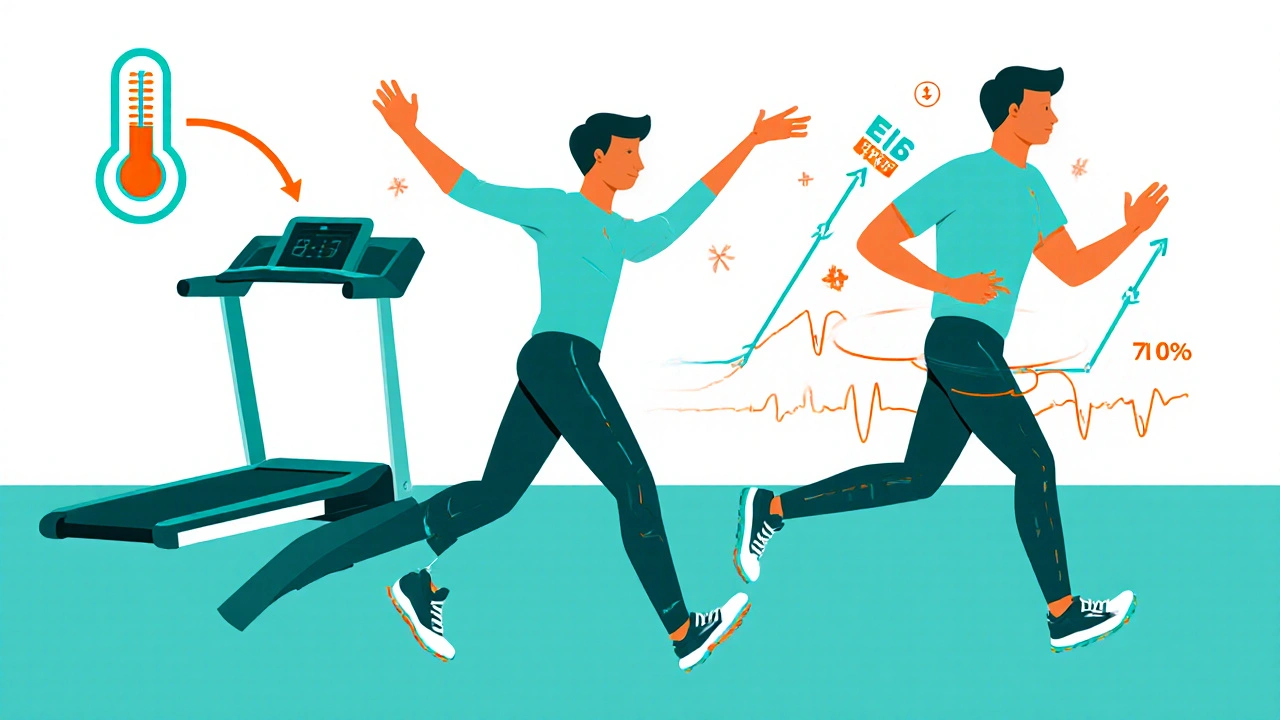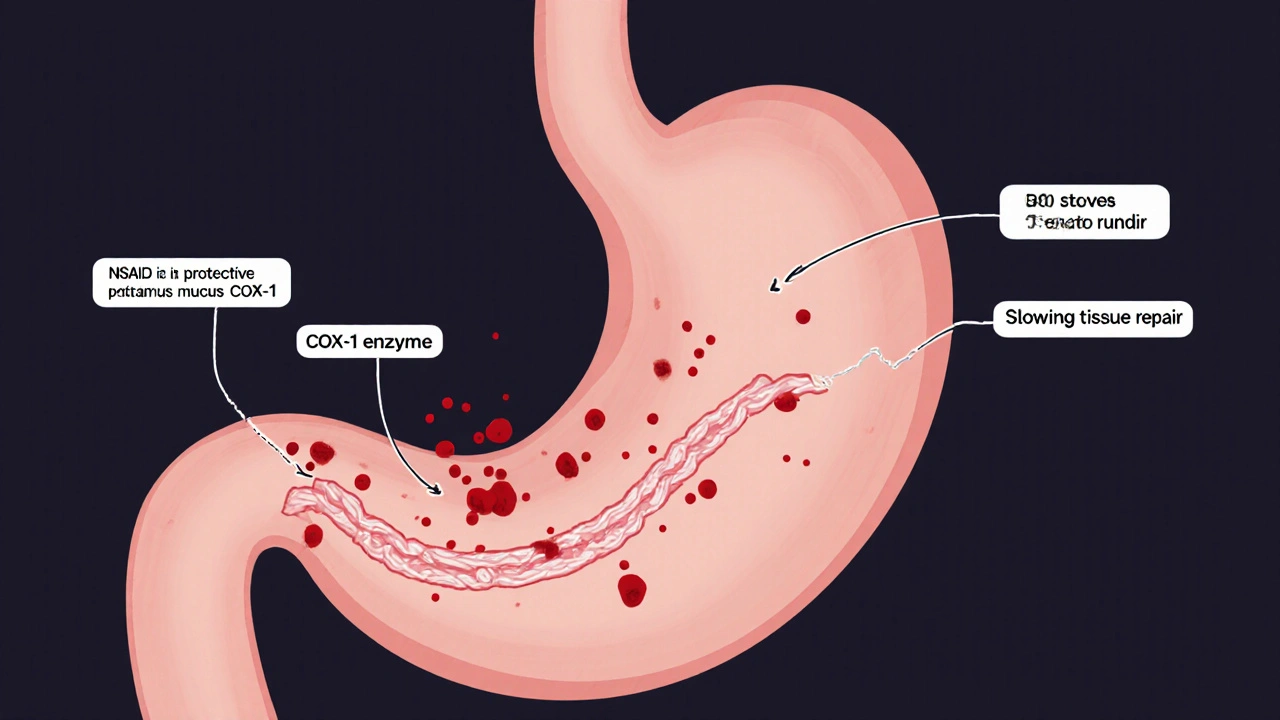Warm-up & Cool-down Calculator
Customize Your Routine
Your Recommended Routine
Warm-up
Duration: 10 minutes
Key exercises:
Cool-down
Duration: 8 minutes
Key exercises:
Pro Tip
Ever walked out of the gym feeling sore, or twisted an ankle after a quick sprint? The missing piece is often the simplest part of your routine: warming up and cooling down. Skipping these minutes can turn a regular workout into a painful setback, while a smart routine keeps your body ready and reduces the risk of strains, tears, and chronic pain.
Why Warm‑up and Cool‑down Matter
Before you lift a weight or hit the track, a proper Warm-up is a preparatory set of low‑intensity exercises that raise core temperature, increase heart rate, and stimulate blood flow to muscles. This spike in temperature makes muscles more elastic, allowing them to lengthen and contract without tearing. It also primes the nervous system, sharpening coordination and reaction time-critical for activities that demand quick changes in direction.
After the workout, the Cool-down is a gradual reduction in activity that helps the cardiovascular system return to resting levels and promotes removal of metabolic waste. Cooling down prevents blood pooling in the lower extremities, reduces post‑exercise dizziness, and speeds up recovery by flushing out lactic acid and other by‑products that can cause stiffness.
Key Components of an Effective Warm‑up
- Dynamic stretching involves controlled movements that take joints through their full range of motion, such as leg swings, arm circles, and walking lunges. These motions increase synovial fluid production, making joints glide more smoothly.
- Light aerobic activity-jogging, jump rope, or cycling for 5‑10 minutes-to elevate Heart rate to about 60‑70% of your maximum, ensuring oxygen‑rich blood reaches working muscles.
- Sport‑specific drills that mimic the movements you’ll perform, like shadow boxing before a sparring session or high‑knee runs before sprint intervals.
These steps collectively boost Muscle elasticity the ability of muscle fibers to stretch and recoil efficiently, reducing the chance of micro‑tears that lead to larger injuries.
Designing a Cool‑down That Actually Works
- Gradual cardio decrease: walk or pedal at a very easy pace for 3‑5 minutes to let Heart rate slowly descend.
- Static stretching holds a muscle at its end range for 20‑30 seconds, promoting lengthening and relaxation. Focus on muscles that bore the brunt of the workout-hamstrings, quadriceps, chest, and shoulders.
- Deep breathing exercises to activate the parasympathetic nervous system, which helps lower cortisol and speeds up tissue repair.
- Hydration and a brief protein‑rich snack within 30 minutes to replenish glycogen stores and support muscle rebuilding.
One often‑overlooked benefit of a cool‑down is the reduction of Lactic acid a metabolite that accumulates during high‑intensity work and can cause muscle soreness if not cleared efficiently. Gentle movement keeps blood circulating, delivering oxygen that converts lactic acid back into usable fuel.
Common Mistakes and How to Avoid Them
Skipping the warm‑up. Rushing straight into heavy lifts or sprints leaves muscles cold and joints stiff, dramatically raising the risk of strains.
Doing static stretches before activity. Holding a stretch while muscles are cold can actually decrease power output and increase tear risk. Save static stretches for the cool‑down.
Over‑doing the cool‑down. Stretching to the point of pain or extending the cool‑down beyond 15 minutes can lead to unnecessary soreness and waste time.
Ignoring individual needs. One size does not fit all; athletes with certain conditions (e.g., tendonitis) may need extra mobility work, while others might benefit from a shorter warm‑up.
Comparison: Warm‑up vs Cool‑down
| Aspect | Warm‑up | Cool‑down |
|---|---|---|
| Primary Goal | Prepare body for effort | Facilitate recovery |
| Typical Duration | 5‑15 minutes | 5‑10 minutes |
| Key Activities | Dynamic stretching, light cardio, sport‑specific drills | Gradual cardio, static stretching, breathing, rehydration |
| Physiological Effect | Increases core temperature, heart rate, nerve firing rate | Decreases heart rate, removes metabolic waste, lowers cortisol |
| Injury Risk Reduction | Prevents strains, tears, joint sprains | Reduces delayed‑onset muscle soreness, prevents blood pooling |
Quick Takeaways
- Both warm‑up and cool‑down are non‑negotiable for injury prevention.
- Warm‑up should be dynamic, raise heart rate, and mirror the upcoming activity.
- Cool‑down should be gradual, focus on static stretching, and support metabolic clearance.
- Tailor the length and intensity to your fitness level and sport.
- Consistent routines cut recovery time and keep you training longer.
Frequently Asked Questions
How long should a warm‑up be for a beginner?
For most beginners, 5‑10 minutes of light cardio followed by 5 minutes of dynamic stretching is enough. The goal is to feel a gentle heat in the muscles without getting fatigued.
Can I skip the cool‑down if I’m short on time?
Skipping it occasionally won’t cause immediate harm, but it raises the chance of dizziness and prolonged soreness. A 2‑minute walk and a quick hamstring stretch are better than nothing.
Is static stretching ever useful before exercise?
Static stretching is best saved for the post‑workout phase. When done before activity, it can temporarily reduce muscle strength and power output.
What’s the best order for dynamic stretches?
Start with large‑joint movements (arm circles, hip circles), then progress to larger muscle groups (leg swings, walking lunges), and finish with sport‑specific actions that mimic the main workout.
How does cooling down affect lactic acid?
A gentle cool‑down keeps blood moving, delivering oxygen that helps convert lactic acid back into pyruvate, which the body can reuse for energy. This speeds up recovery and lessens muscle soreness.








8 Comments